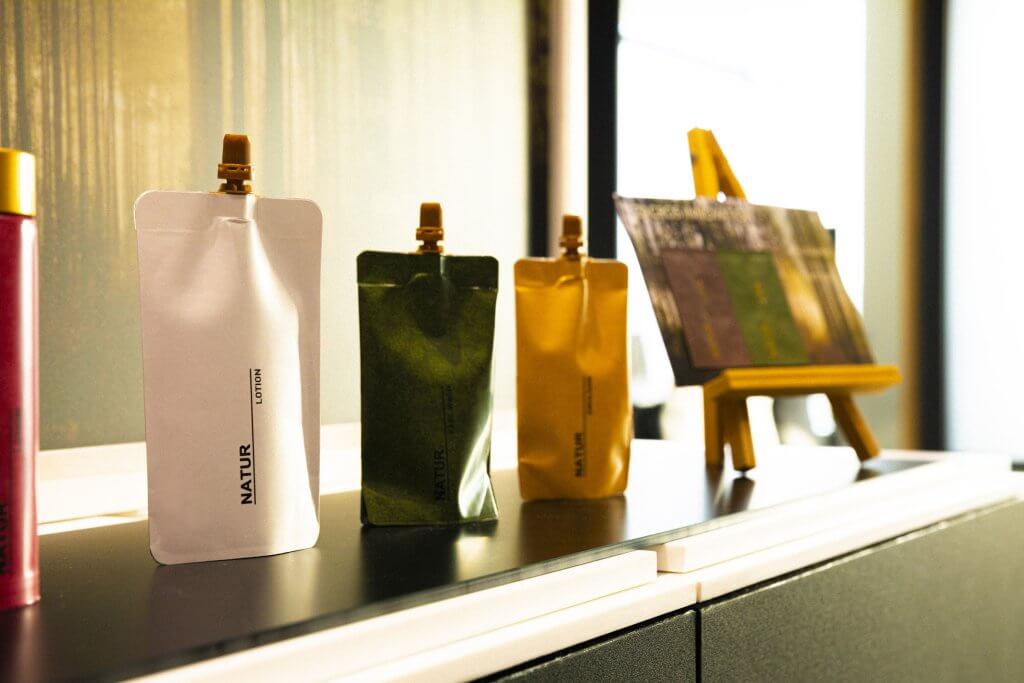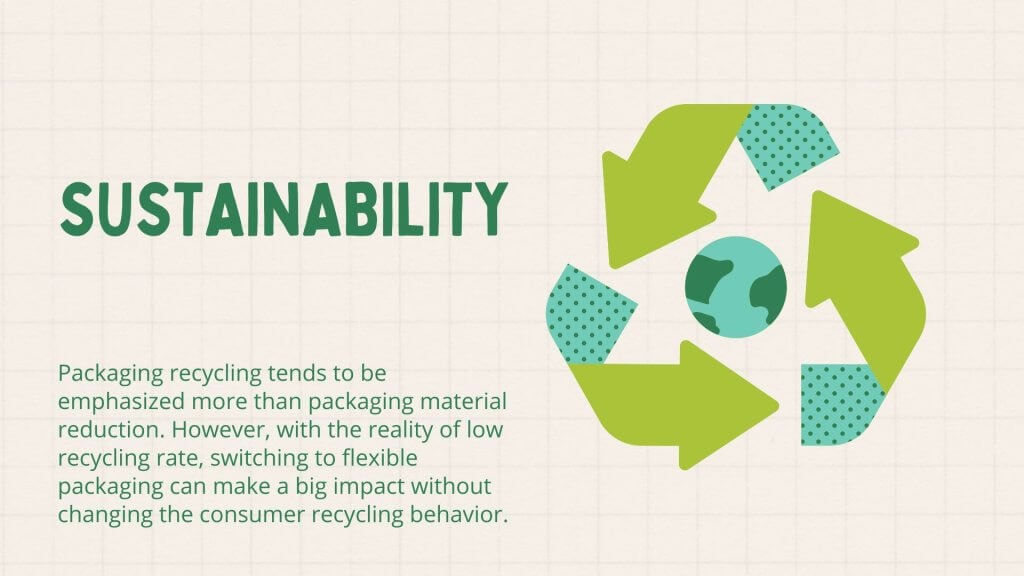As the packaging landscape undergoes a major shift towards sustainability, we are excited to bring you insights into the flexible packaging world for the beauty and personal care industry. At ZACROS, we champion this change with our range of sustainable liquid flexible packaging options, particularly our innovative flexible pouch. In this blog, we aim to guide you through the key considerations of transitioning to flexible packaging. Our mission is to empower brands to make informed choices that not only benefit their businesses but also contribute to a more sustainable future.
Why Brands Prefer Flexible Pouches
Flexible pouches offer several benefits to both brand and consumers, ranging from sustainability and performance to usability and customizability. Film structures and shape and size are easily modified to meet performance and design requirements. Easily stored and less bulky, flexible pouches have a high evacuation rate for efficient product usage. On top of performance, flexible pouches reduce environmental impacts throughout the packaging life cycle compared to alternative packaging.

Things to Consider Before Making the Switch
Chemical Compatibility
Some fragrances and active ingredients can interact with packaging materials. One of the examples is essential oil. The interaction may lead to undesirable outcomes such as leakage or compromised structure. To prevent these issues, rigorous testing of chemical compatibility is essential. It’s crucial to identify potential reactions and ensure that the chosen flexible packaging is strong against the specific chemical compositions of the liquid products that are unable to be packaged due to chemical compatibility issues can be pouched with our NIf™ material. Take a look at our blog to learn more about this process.
Finding the Right Partners
Selecting the right partners in your supply chain is huge when transitioning to flexible packaging. Liquid fillers may not universally handle pouch filling due to the uniqueness of this packaging format. Collaborate with suppliers who specialize in liquid flexible packaging, ensuring their expertise aligns with your product requirements.
Additionally, consider the end-of-life journey of your packaging. Understand the limitations of flexible film recycling, especially concerning product applications that render a technically recyclable film as “not yet recyclable”. Many Store Drop-off programs accept flexible packaging; however, some ineligible product applications include wet, sticky, or oily products, hazardous materials, and those difficult for consumers to prepare as ‘clean and dry’. Still flexible packaging in beauty and personal care products have recycling solutions such as TerraCycle and Pact Collective. Whatever you choose for your end-of-life packaging, at ZACROS, we are here to help guide you in the right direction.
Sustainability
Sustainability is complex and every business need is different. Make sure to understand your priority in order to select right packaging. People often overlook the impact of material reduction and overall carbon emissions. Packaging recycling tends to be emphasized more than packaging material reduction. However, with the reality of low recycling rate, switching to flexible packaging can make a big impact without changing the consumer recycling behavior.
In addition, beyond the conventional view of transportation solely as the shipment of final products to retail locations and customers, it is essential to criticize the entire transportation process. Life Cycle Assessment (LCA) will be a great tool to analyze environmental impact of packaging, including transportation efficiency and material use. Research the percentage of transportation cost credited to raw materials, filling and the final product shipment. Understanding this breakdown allows for optimization of transportation efficiency.
Packaging Design
Enhancing the aesthetics of your flexible packaging contributes to a positive consumer perception, both on physical store shelves and online platforms. Creative and distinctive designs not only attract attention but also serve as a visual representation of your commitment to sustainability and innovation. To further solidify this connection between design and sustainability, research data, like from Nielsen, underscores the consumer’s willingness to adopt flexible packaging when the branding message remains consistent. The importance of communicating sustainability through packaging cannot be overstated.
Incorporating a sustainability message into your flexible packaging design can improve your brand’s performance.
As Nielsen reveals, 81% of global consumers believe that companies should actively contribute to environmental improvement. Incorporating a sustainability message into your flexible packaging design not only aligns with consumer values but also positions your brand as a responsible contributor to a greener future. This aligns with the growing consumer trend of supporting eco-conscious brands, providing a compelling reason to make the switch to flexible packaging.
Conclusion
In the beauty and personal care industry, the shift towards flexible packaging, ZACROS, emerges as a sustainability resource. Our liquid flexible packaging, especially our pouch, presents numerous benefits – reducing plastic consumption, minimizing carbon footprints, and optimizing recyclability. Choosing flexible packaging is not just a business move; it is a commitment to a greener future, reiterating the global trend of supporting eco-conscious brands. Making the switch is a responsible stride towards a more sustainable friendly beauty industry.
Sources
Aral, Birnur K., Ph.D., and Sarah Gregory Wharton. “Why Is It so Hard to Recycle Beauty Packaging?” Good Housekeeping, 6 Feb. 2024
How2Recycle. “How2Recycle Guidelines for Brands and Retailers.” How2Recycle, February 2024
NielsenIQ. “Global Consumers Seek Companies that Care about Environmental Issues.” NielsenIQ, 2018
